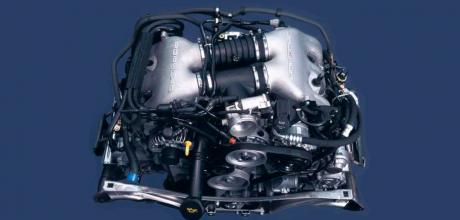Technology explained Porsche 911 X51 Powerkit

Alisdair Cusick explains how the X51 Powerkit extracted more from the 911’s nat-asp flat six
For some owners, standard is never enough – even on a 911. With this in mind, Porsche offered a performance increase package for the 911 called the X51 Powerkit. Since the 993, the X51 was a factory-approved package to give a 911 engine a little bit extra.
The X51 floated around on options lists for both the 993 and 996, but you may not have known this, so uncommonly was the option specified. It was the 997 – specifically 997.2 models – that saw the package come into wider awareness, thanks to models like the Sport Classic, Speedster and GTS, which all came with the X51. Rather than a scant mention buried near the back of a brochure, the Powerkit started to become central to the performance of the specials.
The kit, originally only for 997 Carrera S and 4S models, is far more than just a simple chip retune. It used cylinder heads with flow-optimised intake and exhaust ports, a larger intake manifold and throttle body, flow-optimised X51 headers with a larger cross-section, a third radiator and special maps for the DME control unit. Visually, the only differences were the carbon-fibre airbox, fed by two channels, and an optional Sports Exhaust with twin chrome tips. The result wasn’t an extra push across the rev range as some may have expected, but instead brought benefits at the top and bottom. For some, that wasn’t dramatic enough, but an X51 997.1 is decidedly rev-happy and a joy to pedal.
For the 997.2, the X51 intake tract was redesigned to further enhance performance, and incorporated six switchable valves. Referred to as the variable resonance intake system, the valves could adjust to suit power or torque airflow requirements for engine speed and throttle position. Essentially, the intake encourages the air to behave in a way that compresses more air charge into the cylinder to benefit either power or torque as needed. More air coming in means more fuel can burn, and a bigger bang means more performance. Combined with DFI of the 997.2, the performance benefit spread across the rev range.
On the 997.2 the X51 took power from 385 to 408bhp, but peak torque remained at 420Nm, albeit with a much flatter torque curve, and lowering the peak to 4,200rpm. Put another way, the Powerkit gave you the power of the revered 993 Turbo, but with the linear delivery from a naturally aspirated engine.

